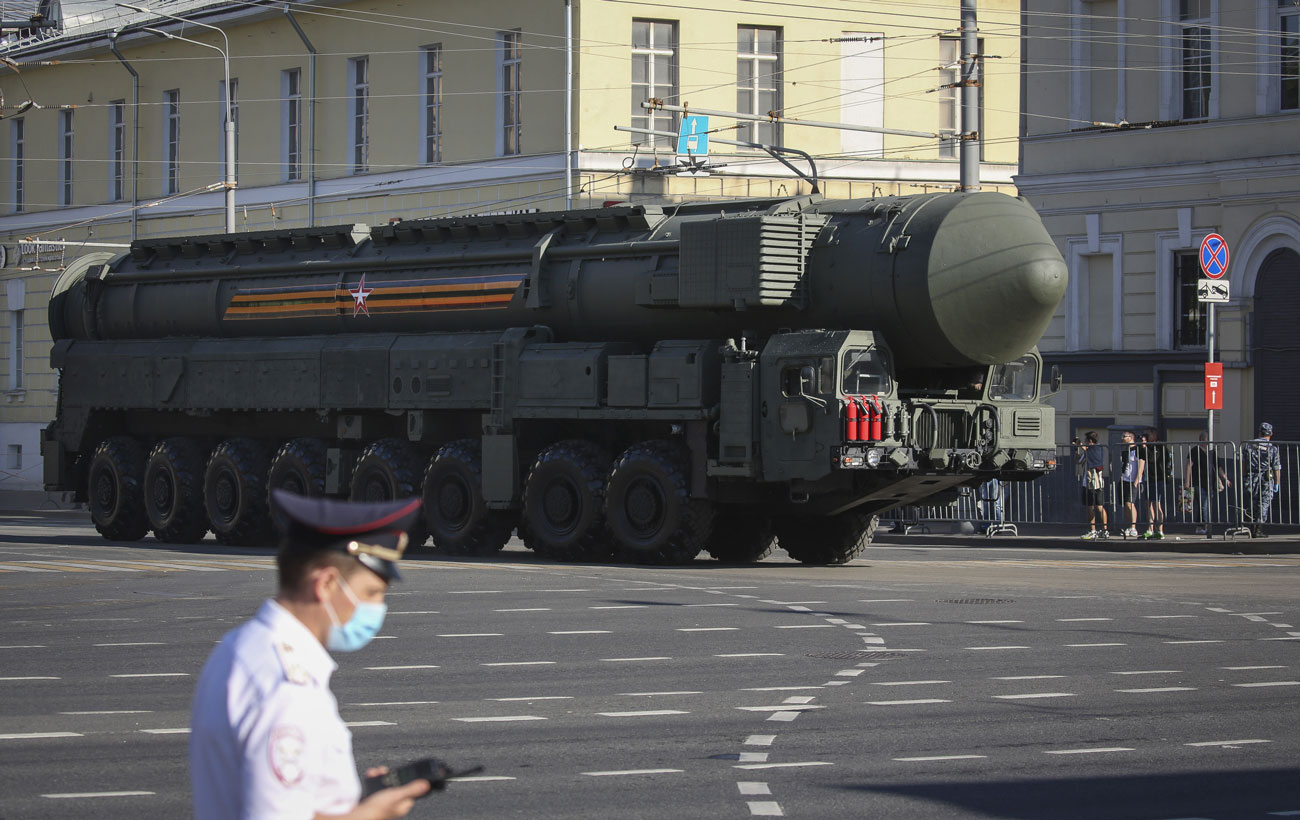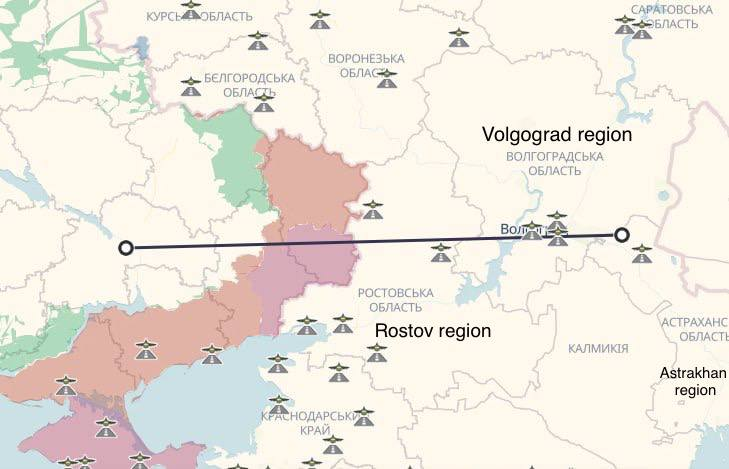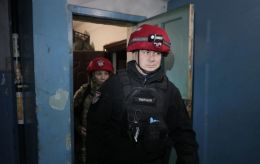New missile: How Oreshnik turns into Kedr and who Putin's threats are directed at
 Photo: Vladimir Putin tested Kedr medium-range ballistic missile with a strike on Dnipro (Getty Images)
Photo: Vladimir Putin tested Kedr medium-range ballistic missile with a strike on Dnipro (Getty Images)
The day before, Russia struck Dnipro with an experimental medium-range ballistic missile. Within a day, it became known that it was the Kedr missile, although Kremlin leader Vladimir Putin referred to it as Oreshnik. In any case, Ukraine once again became a testing ground for Russia's weaponry.
More details on why Putin came up with Oreshnik, who the show of force is aimed at, and whether such strikes could be repeated, can be found in the RBC-Ukraine material.
Contents
- Strike on Dnipro with new ballistic missile: What is known
- Oreshnik from Putin: What the Kremlin says
- Kedr, not Oreshnik. But there is no difference
- Who and why Putin is threatening
- Could the strike be repeated and can Ukraine intercept Kedr missiles
Strike on Dnipro with new ballistic missile: What is known
On the morning of November 21, Russian forces launched a massive missile strike on Dnipro. Among the missiles fired were the air-launched Kinzhal, seven Kh-101 missiles (six of which were intercepted), and an intercontinental ballistic missile.
"Today it was a new Russian missile. All the parameters: speed, altitude – match those of an intercontinental ballistic missile. All expert evaluations are underway. Obviously, Putin is using Ukraine as a testing ground," stated President Volodymyr Zelenskyy.
It is known that the missile was launched from the Astrakhan region, where the RS-26 Rubezh missile systems are based at the Kapustin Yar test site. These systems are intended for nuclear strikes at ranges of up to 6,000 km. From Kapustin Yar to Dnipro is about 800 km, and the missile launched was without a warhead.
It should be noted that the strike had been expected the day before, on November 20. For more details, read the material RS-26 Rubezh: What Russia's new missile signals about its military strategy.

Photo: Rescuers eliminate the aftermath of the November 21 attack on Dnipro (facebook.com/MNSDNE)
The possibility that the Rubezh missile hit Dnipro was discussed by both Ukrainian media and Russian Z-channels (pro-war propaganda channels - ed.). Serhii Lysak, the head of the Dnipropetrovsk regional military administration, reported damage to an industrial enterprise. Pro-Kremlin bloggers claimed that the missile targeted the Pivdenmash plant.
Videos of the likely strike appeared on Telegram channels, showing six impacts within a few seconds, with each munition breaking into several parts. Large explosions were visible at the impact sites.
EU spokesperson Peter Stano called the use of intercontinental ballistic missiles another escalation. He stated that Putin is once again betting on a nuclear game. German Chancellor Olaf Scholz referred to the deployment of new weapons as "a horrific escalation." China, in its characteristic manner, urged all parties to "remain calm and exercise restraint."
Meanwhile, Kyiv is convening an urgent meeting of the Ukraine-NATO Council at the ambassadorial level on Tuesday, November 26.
Western media, citing intelligence sources, report that the missile was of medium-range. However, this is mostly a matter of classification, as the Rubezh is considered a medium-range missile by the West, with a range of up to 5500 km. In the case of an intercontinental ballistic missile, Moscow is required to notify the US to avoid provoking a retaliatory strike scenario. As it later became known, such a warning had indeed been issued.
Oreshnik from Putin: What the Kremlin says
In his evening address, Putin revealed the name of the missile, which caused some confusion. According to him, the target in Dnipro was attacked in response to "aggressive actions by NATO countries," referring to the ballistic ATACMS and Storm Shadow cruise missile strikes in the Bryansk and Kursk regions.
"In combat conditions, testing was conducted, including one of the latest Russian medium-range missile systems – in this case, a ballistic missile with a non-nuclear hypersonic configuration. Our missile forces named it Oreshnik," he stated.
According to Putin, it is currently impossible to counter such systems as Oreshnik. The missiles strike targets at speeds of 10 Mach (about 2.5-3 km per second). He claimed that modern Western missile defense systems are unable to intercept them.

Photo: Russian medium-range ballistic missile could be an evolution of the Yars system (Getty Images)
Since this is experimental weaponry, reliable information about it is not available in open sources. The likely range could be up to 5500 km, judging by the Russian definition of medium-range missiles. Most likely, the base model could be the RS-26 Rubezh.
At least, this is what Pentagon representative Sabrina Singh has stated. Meanwhile, Financial Times, citing an unnamed senior military official from Ukraine, reported that the missile that struck Dnipro was not the Oreshnik, but the Rubezh.
The danger of such a missile is not just in its speed. It is impossible to predict in advance whether it will carry, for example, a nuclear warhead or not. The same air-launched ballistic Kinzhal can be equipped with several submunitions containing small nuclear bombs. Something similar may have been implemented in the Oreshnik. In any case, all of this is still speculation, and what we know about the Oreshnik is only what Putin has claimed, says military expert Pavlo Narozhnyy.
Kedr, not Oreshnik. But there is no difference
However, according to the official Ukrainian version, the attack on Dnipro was not carried out by the RS-26 Rubezh or the Oreshnik. According to the Defense Intelligence of the Ministry of Defense (GUR), it is most likely that on November 21, the Russian forces launched a ballistic missile from the Kedr system.
The flight time from the launch in the Astrakhan region to the target was 15 minutes. The missile had six warheads, each equipped with six submunitions. The speed on the terminal part of the trajectory exceeded 11 Machs.
According to the GUR, the Kedr was previously tested at the Kapustin Yar test site in October 2023 and June 2024. The development of the mobile complex involved several Russian defense enterprises in Moscow, Volgograd, and Voronezh.
The uncertainty was heightened as this marks the third variation of the intercontinental ballistic missile name in recent times. However, based on Pentagon assessments, it is logical to conclude that the Kedr is an evolution of the Rubezh, and it would be reasonable to refer to it as Oreshnik, writes Defense Express.

Photo: The Kedr missile flew 800 km in 15 minutes (deepstatemap.live)
In Russian sources, Kedr was mentioned with some nuances. At the beginning of 2021, there were reports about the start of the design of a "new-generation strategic complex" with that name. One news agency mentioned that the complex was being developed as a replacement for the less mobile and more vulnerable ICBM Yars. Additionally, Russian propaganda claimed that the Kedr project was included in the armaments program up to 2024, with the transition to the stage of experimental design work planned for 2023-2024, and its adoption into service expected by the end of the 2020s.
The mobility of the complex provides an advantage in that a launch can be organized from almost any point in Russia, reducing the risk of being hit on the ground. Furthermore, there is fantastical information suggesting that the missile would be used solely for rapid altitude gain, after which the warhead would allegedly travel towards its target at speeds of around 28 Mach, possibly at low altitudes. In this combination, the warhead would be impossible to intercept, even with modern missile defense systems.
However, Pavlo Narozhnyy suggests relying on the data from the Defense Intelligence (GUR). "The speed of Kedr reaches 11 Mach, which is three times more than the known Kinzhal," he added.
Head of military intelligence Kyrylo Budanov noted that as of October, Russia could have created "two or slightly more" experimental prototypes of the Kedr ballistic missile. According to him, Oreshnik is the name of the research work. The system itself is called Kedr, and it is a medium-range ballistic missile intended for nuclear strikes. There is no mention of serial production.
Analysts from Defense Express lean towards the idea that Kedr is the general name for a new system that is an evolution of the ICBM Yars. Perhaps Yars serves as the base for assembling a medium-range missile with a light warhead for 5500 km and a heavy one for longer ranges. This explanation suggests that Kedr could simultaneously be Oreshnik and Rubezh.
Who and why Putin is threatening
Yesterday's address by Putin was directed at Western countries supplying weapons to Ukraine. Foreign media have interpreted his words in different ways.
For example, the Associated Press quotes an expert who claims that the new missile "outperforms anything observed so far." Reuters writes about the alarm raised, while The New York Times, citing officials, emphasizes that the missile may not meet the specifications stated by Putin.
The Russian President himself hinted that after the ATACMS and Storm Shadow strikes on Russian territory, he has the right to strike US, UK, and French targets. "I recommend that the ruling elites of those countries, who are planning to use their military contingents against Russia, seriously consider this," he threatened.
This is all part of Putin's intimidation tactics towards Europe and the US, who are working on means of delivering nuclear warheads. Now, Putin claims to have a new hypersonic missile with a nuclear warhead. On the other hand, this could be an attempt to pressure the West to stop supporting Ukraine, says Narozhnyy.
"The essence of all dictatorial regimes is quite simple: look, I'm crazy, I have a huge missile, and I can strike with this missile. Putin does it, Kim Jong-un does it, all dictators do it," explained the expert.
At the same time, in his opinion, there is no real threat of using such missiles with nuclear warheads. A strike on Kyiv, Dnipro, or another city in Ukraine, even with tactical warheads, would be a nuclear strike on Europe.
"And Putin is dependent on Europe because he sells gas, oil, and cannot simply sever ties. And most importantly, Chinese leader Xi Jinping is categorically against the use of nuclear weapons. Putin is 100% dependent on comrade Xi. Right now, his entire economy is built around China," added the expert.
Could the strike be repeated and can Ukraine intercept Kedr missiles
At the same time, Narozhnyy does not rule out the possibility that a strike with a similar missile could be repeated, but in a conventional version. And not just as another imitation. "That is, instead of filling it with concrete, it could be filled with explosives. This is absolutely feasible. However, the cost of such a strike is difficult to estimate, it would be tens of millions of dollars," he says.
_interceptors_is_launched_during_a_successful_intercept_test_-_US_Army.jpg)
Photo: medium-range ballistic missiles can be intercepted by systems like the American THAAD (defense.gov)
From a military standpoint, if the warhead weighs 1.2 tons, attacks using such expensive ballistic missiles (without a nuclear warhead) do not make much sense. Russia practically launches 100-120 air-launched cruise missiles (ALCMs) daily at cities like Sumy, Kharkiv, Zaporizhzhia, and front-line towns, and their combined power is far greater.
"If we talk about massive bombardments with 100 missiles, each typical cruise or ballistic missile carries up to 500 kg. And approximately 10% of them unfortunately manage to get through our air defense system. If we take 10 missiles, we get 5 tons that reach the target. What difference will 1.2 tons make in this context? Nothing, except to increase psychological pressure," noted Narozhnyy.
The psychological pressure could be further amplified by a statement from the Kremlin that the Russian military is "developing warning systems for Ukraine’s civilian population in the event of new ballistic missile strikes." Additionally, Putin claimed that in case systems like "Oreshnik" are used, peaceful residents would be "openly and publicly" advised to leave danger zones.
"This is done to get Ukrainians to turn to Russia’s official sources, to watch and receive doses of lies and propaganda. It is designed to cause panic. Ukrainians should only trust official Ukrainian sources," the expert explained.
Currently, Ukraine has no means of intercepting medium-range hypersonic ballistic missiles. Foreign Ministry spokesperson Heorhii Tikhyi believes that Western partners should consider supplying the necessary systems. He mentioned that allies are already being urged to take specific steps, though it is too soon to reveal details.
These missiles approach their targets at very high speeds, releasing dozens of submunitions designed to "sow" a large area. Theoretically, missiles can be intercepted before the terminal phase, for example, by using the American THAAD system, Narozhnyy said.
THAAD is designed to intercept ballistic missiles at ranges up to 200 km and altitudes of 100-150 km. The prospect of its transfer to Ukraine is considered unlikely, primarily due to its high cost, with one system valued at approximately $3 billion.
"And we are not even talking about receiving such a system at this point. We were begging for Patriots for a long time. Furthermore, to ensure reliable protection, THAAD would need to cover at least all regional centers. But we don’t even have enough Patriots for that," the expert concluded.
Meanwhile, a source from the General Staff of the Armed Forces of Ukraine told RBC-Ukraine that the Ukrainian side plans to initiate talks with partners to acquire systems like THAAD or to ensure the modernization of Patriots to be capable of intercepting medium-range ballistic missiles.
Sources: data from the Ukrainian Air Force, statements from President Volodymyr Zelenskyy, Head of Military Intelligence Kyrylo Budanov, materials from Western media, Defense Express, and comments from military expert Pavlo Narozhnyy.

